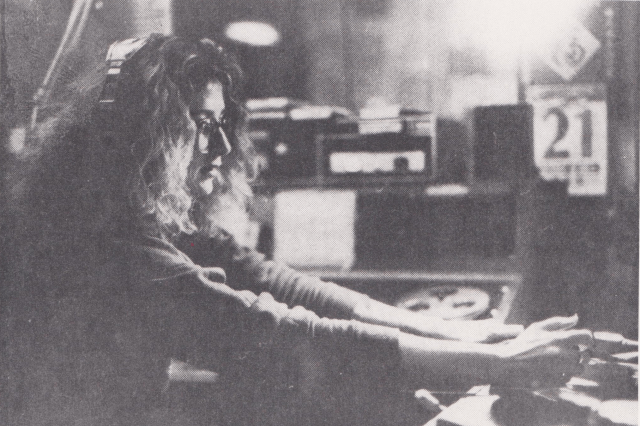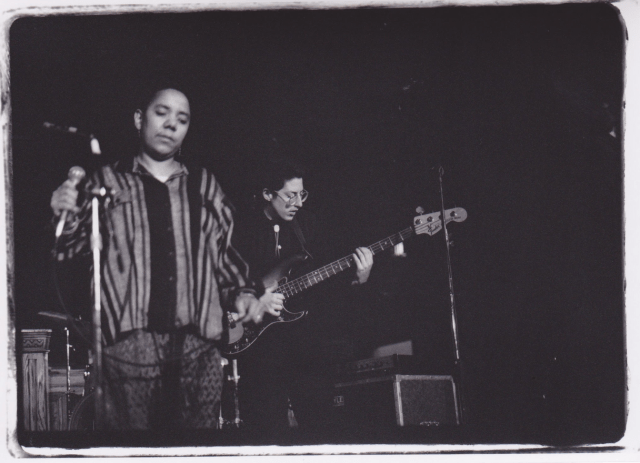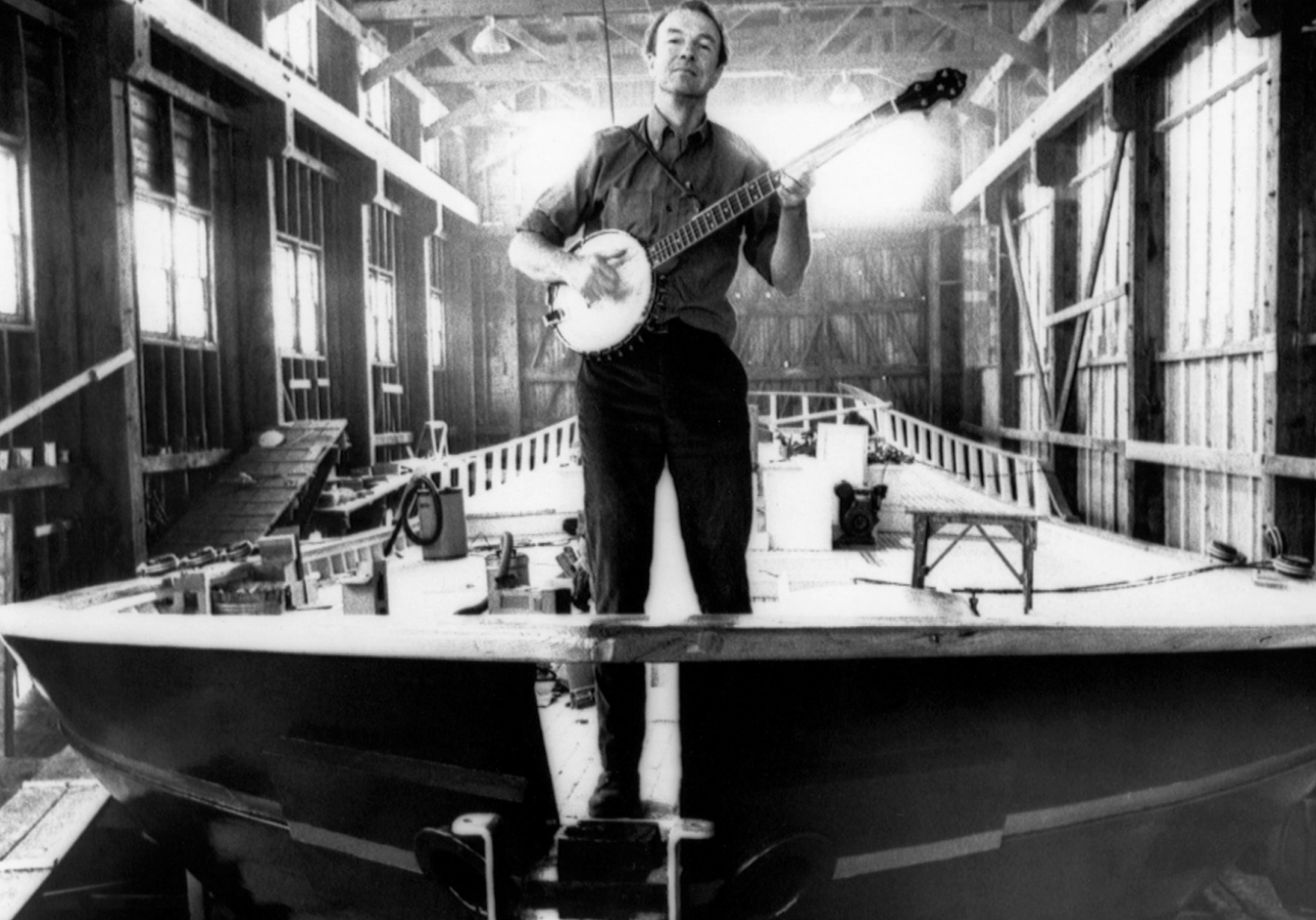+ BOOK LAUNCH INVITATION
+ BOOK PREVIEW + ESSAY
+ MUSIC PLAYLIST
Rubymusic: A Popular History of Women’s Music and Culture
by Connie Kuhns
(CAITLIN PRESS /2023)

- PLAYLIST: On YouTube and Spotify
- INTRO: Rubymusic: Opening A Door for Women
- ESSAY: Writing Rubymusic: It’s Not All Here
- INTERVIEWS:
Aqua Magazine
Vancouver Sun
CBC Radio On the Coast (8.18 mins) - REVIEWS:
The British Columbia Review

Writer, broadcaster and photographer Connie Kuhns has tapped into her massive archives of women’s music and culture to produce her first book.
VANCOUVER BOOK LAUNCH + CONCERT
Head over to Kitsilano’s St. James Hall on Thursday, June 15.
Author Connie Kuhns will be hosting a book launch from 6 – 8 pm.
Buy a book and you’ll gain free entry to a the evening’s concert by legendary Irish folk singer Karan Casey.
Check the Rogue Folk Club for details and tickets.
RUBYMUSIC: OPENING A DOOR FOR WOMEN
A seminal radio show, newspaper column and – now – a book
When Vancouver writer Connie Kuhns pitched a women’s music radio show to Vancouver’s community-run Co-op Radio in 1981, the station had concerns. Was there enough music to fill a 30-minute slot? Were there enough listeners who cared?
Things were different then.
The show, Rubymusic, enjoyed a 15-year run when Kuhns retired it in 1996. As host and dj she tapped into the underground of a burgeoning scene, elevating and making space for it on the airwaves and in the community as this music movement and its players grew.
For two hours each Friday night she showcased and interviewed acts outside the mainstream – Moral Lepers, Animal Slaves, country singer Terilyn Ryan, jazz singer Amanda Hughes, Key Change, The Crimpolines, The Angel Band and Emily. She promoted nascent and promising players like kd lang and Ferron.

Elaine Stef from the Moral Lepers (Kuhns photo)
From behind the mic she interviewed the matriarchs of women’s music – Holly Near, Cris Williamson, Teresa Trull, June Millington, Alix Dobkin and Mary Watkins. She introduced her audience to girl group music, UK punk and the women of country. She presented detailed 4-part documentaries on Aretha Franklin and Janis Joplin. There was special programming on women guitar players including early blues musicians from the Rosetta Records collection and on Olivia Records.
Away from the mic Kuhns travelled to women’s music festivals and gigs. She presented lectures on women’s music in Canada and hosted the Rubymusic Stage at the Vancouver Folk Music Festival.
When Etta James came to Vancouver in 1985, Kuhns interviewed and photographed the star and emceed her Town Pump show. She developed a longstanding friendship with the late and amazing slide blues guitarist Ellen McIlwaine who taught Connie’s kids how to use chopsticks. She wrote, photographed and edited for the musician and was part of the online vigil for her when she died in 2021. Kuhns’ work included writing liner notes and editing the early chapters of McIlwaine’s unfinished autobiography. Her photos ran with obituaries in the Washington Post, Globe and Mail, UK Independent and other newspapers.
In the spirit of the then new journalism Kuhns both broadcast the women’s music movement and was part of it.
–––––––––––
Connie and I met in the hallways of Co-op Radio when I worked there on the Radio Waves program guide in the 80s. We became friends and collaborated on designs for some of her projects over the years. Recently she has been an occasional Kurated contributor.
In the essay below she reflects on writing Rubymusic and offers potent and poignant excerpts from some of its writings. Kuhns thoughtfully considers the scope of the women’s music movement and its impact. Her work and insight leave us richer thanks to her many years of dedication.
Stay tuned and enjoy,

03 June 2023
ESSAY: WRITING RUBYMUSIC
by Connie Kuhns

The author in the studio on a Friday night at Co-op Radio in the 80s (Sharon Knapp photo)
IT’S NOT ALL HERE
Women’s music was a spontaneous outburst unique to the energy and anger of the 1970s. It was a parallel universe where women learned from each other and thrived
As I wrote in the introduction to this book, “It’s not all here”. At home, under the beds, in closets and on shelves, I have boxes of cassette tapes and Ampex reels – Holly Near, Alix Dobkin, Margret RoadKnight, Judy Small, Leslie Ann Jones, June Millington, Mary Watkins, Faith Nolan, Jane Fair, Marie-Lynn Hammond, Lorraine Segato, Lucie Blue Tremblay, Connie Kaldor, Sylvia Tyson – their voices fading and blending with age.
Within arm’s reach as I write this, is a pile of transcribed interviews, all done on a typewriter. There are perhaps a thousand pages of women’s words spoken decades ago into my tape recorder. I have spiral notebooks full of actual notes and file cabinets full of actual newspaper clippings. Spread out on the floor not far from my laptop are six or seven boxes of promo kits, posters, scrapbooks and other mementoes. I have a band chart made for me by Marion X of the Moral Lepers, which is so precious I will someday have it framed. In the meantime, there is this side project: I’ve been trying to straighten at least a dozen posters that have been rolled up with hardened rubber bands since the 1980s. They are now clipped together and hanging on the wall.
This book, which I owe to Vici Johnstone, publisher of Caitlin Press, Mary Schendlinger my long-time editor, and author Liza Keogh who gave me the idea, is a curated sample of what has been previously published. It is a combination of interviews, essays, reviews, photographs and historical research, now part of an official record. Herstory, as we used to call it.
“I wish I could tell you everything – all those moments behind the scenes that are the foundation of this collection. Sawagi Taiko surprised us big time from the Rubymusic Stage at the Vancouver Folk Music Festival by playing “Wipe Out” on Japanese taiko drums. Linda Tillery and the Cultural Heritage Choir made their first Canadian appearance on the Rubymusic Stage and returned the next year. I spent a weekend in the recording studio with jazz musician and composer Mary Watkins and pianist Marcia Meyer during the recording of Marcia’s atmospheric instrumental album Oregon Summer, and I got to be a fan girl back stage with Gloria Steinem when I showed her a photograph of me from the 1970s, with my hair parted down the middle, wearing a copy of her signature aviator glasses. There was also the night my friend Bill Grant called me from a pay phone and told me to get down to the Savoy immediately; a young wild woman in a bridal gown from Alberta had taken over the club. I interviewed kd lang the next day, and a few months later I introduced her from the stage of the Commodore Ballroom when she came back to Vancouver to headline a benefit for Co-op Radio”. (from the Introduction, I’m a Radio)
Intimate stories
There are intimate stories among these interviews: Rita MacNeil believed she was a disappointment to her mother and Ferron remembers how she couldn’t speak. Michelle Shocked was raped in Europe and Elizabeth Fisher lived her young life as a refugee. Esther Berjarano was chosen to play in the women’s orchestra on the platform as the trains arrived at Auschwitz-Birkenau. And then there’s this, as recalled by musician and historian Jane Sapp, when asked about her work documenting the civil rights movement:
“I talked to a mother who lost a child in that movement. Her child was run down by a group of white men from southwest Alabama. But she understood full well that was the risk she was taking. She said that there were many risks and sacrifices that we have to take for freedom and she still continues to fight and struggle even though she lost a daughter in that struggle”.
Etta James

James at the Town Pump, 1985 (Kuhns photo)
Etta James was the full package. Thanks to Judy Werle, her manager at the time, I interviewed Etta, emceed her concert, photographed her while she performed, and danced the night away. Etta had a lot to say about her music career, including her brief encounters with Janis Joplin, but it was her story about getting a headstone for the unmarked grave of rhythm and blues singer Esther Phillips that had that touch humour and pathos.
“Even after the man got the headstone the other night, he comes to me and tells me ‘Oh, now we need a grave that Esther was in, that’s not her grave’. And I said, “Well what are you talking about now?” Well, they want to take her out to some big-time cemetery, you know, Forest Lawn or one of those. And I said, “Look, Esther wasn’t no Forest Lawn girl”.
Amy Grant
Christian singer and songwriter Amy Grant was only 27 years old when we spoke (she had already won four Grammy awards). She was open and thoughtful even as I continually asked her questions about the current scandals among evangelicals which had absolutely nothing to do with her. In response, she simply said: “I was home pregnant when all that went down, and I felt like it was a great year to be off the road.” In another reflective moment: I remember sitting in the shade at the Vancouver Folk Music Festival with Olivia Records pioneer Teresa Trull looking out over the crowd when she said: “Nowadays on high school graduation, people go away on trips to Hawaii and Jamaica. I just remember when I was in high school, everyone went away to Vietnam.”
Lillian Allen

Allen with Rachel Melas (Kuhns photo)
I interviewed spoken word artist and preeminent dub poet Lillian Allen in her home in Toronto on a fall day and then followed up over the phone in the spring before she performed her sold out shows at the Vancouver East Cultural Centre. As a master of language, (she has recently been named Poet Laureate of Toronto) her words were rhythmic and wise.
“I think the great task in life is to keep expanding. The more you know, the more you need to know. The more you do, the more you need to do. The more you see, the more you need to see.”
Lillian, very generously, wrote an endorsement for my book, which appears on the back cover.
Yoko Ono
My obsessions with Yoko Ono and Joni Mitchell took me deep into their lives as I looked for original and unique ways to tell their stories. With Yoko, that meant months and months and months of reading, listening, searching and having her living inside my head. I followed her on Twitter which in a crazy way, led the way.
“It was a union that broke up two marriages, leaving two small children behind, and, truthfully helped bring about the end of the revolutionary Beatles. The couple’s public behaviour and the legal battles that followed destroyed friendships and families. It’s a saga of infidelity, drug busts and addiction; but also, of transformation, collaboration and creation. Together they gave the world “Imagine”, and this year, on the anniversary of their honeymoon performances, known as the Bed-ins for Peace, their life together is being celebrated.” (From the essay There is a Wind That Never Dies).
Twitter (March 6, 2019): Use your skills to heal what was destroyed in the past.
Joni Mitchell
In writing about Joni Mitchell, I was inspired by Barney Hoskyns’ 2016 book Reckless Daughter: A Joni Mitchell Anthology which I bought at Blackwell’s Books in Oxford. It is a collection of interviews and reviews spanning fifty years written by the most prominent music journalists of the time. The critics wrote one story, but I had a different perspective. I attempted to make the match. Hoskyns’ book became the structure. As I wrote in my essay, Fifty Years in Review, she was feted and maligned. Joni Mitchell was a startling figure: the way she played, wrote, loved and looked left her wide open for criticism. But as I saw it, those very first albums were filled with grief.
Ellen McIlwaine

McIlwaine (Kuhns photo)
The late slide guitarist and blues musician Ellen McIlwaine’s photograph is on the cover and she appears throughout the book. I interviewed her for the first time in 1984 and had the good fortune to become one of her many life-long friends. I’ve included two interviews, liner notes, and her obituary in this collection. As I wrote in my introduction, I wish I had more of her to offer you and more of her for myself.
The essays
The following historic essays and reviews may be the heart of my book: Women’s Music and the Mothers of Invention, A Brief History of Canadian Women’s Music Festivals, The Song Remains the Same, A Woman’s Place is on the Radio, Rise Up: Songs of the Women’s Movement, and an expanded version of Strange Women: the story of the women involved in Vancouver’s punk music and feminist scenes.
In The Mothers of Invention, a history of how “women’s music” grew and evolved in Canada, I interviewed at least a hundred women musicians, songwriters, composers, singers, technicians, concert producers, and coffee house collectives, as well as the maker of the Picasso guitar. I crossed Canada meeting women in airports, hotel rooms, kitchens and city parks, backstage at concert halls and folk festivals and at the Toronto Women’s Club.
There was an urgency to telling this story, but also an overwhelming responsibility. The story was almost too big and the issues too important. My friend and mentor Karlene Faith suggested at the time, that perhaps it was too soon. We have to live with something awhile before we understand its meaning.
“Although the idea of women-only space was controversial in the ‘70s and often misunderstood in the ‘80s and ‘90s, within that environment something wonderful happened. Women spoke honestly to each other. They sang together. They loved one another. They rejoiced in the telling of their stories and secrets. With music as the salve, women were healed. For a brief time, the slumber party had come of age.” (From Women’s Music and the Mothers of Invention)
Almost 25 years later, in Strange Women, I wrote: “Women had been making music since the beginning, but it was within punk that women stood up and screamed.” Included in this expanded essay is The Family Tree, a list of forty-five different women-only or mixed bands who formed in Vancouver between 1977-1988. These details are previously lost to time.
“In a story that may be familiar to some, my mother was the nighttime cleaning lady at her hometown radio station. In the dark and damp basement, she found hundreds of demo 45s that had been thrown away. She saved them for me. Most of those records were by women. This is where we find our history: in those dark and damp places, in used records stores, old magazines and photographs and in the memories of others… There is a spirit that connects the women in this book. In their honour, I submit to you this history, before our words are lost again.” (From the introduction I’m a Radio).
Dedication
Rubymusic: A Popular History of Women’s Music and Culture is dedicated to my mother Wilma D. Kuhns who gave me her own teenaged collection of 45s, and to my mentor Karlene Faith who introduced me to everybody.

Debra Rooney cartoon
THE PLAYLIST: Mothers of Invention
Rubymusic’s The Mothers of Invention playlist features a few dozen of the women who built and powered the women’s music movement. They are the musicians who helped chart a parallel world of song that had a distinct political and cultural agenda.
Some of the artists you’ll hear include Ferron, Meg Christian, Holly Near, Cris Williamson, Connie Kaldor, Fanny, Rita MacNeil, Teresa Trull, Linda Tillery, Ellen McIlwaine, and Lillian Allen.
NOTE
The YouTube and Spotify playlists differ. YouTube has a much more expansive song and artist selection.
On YouTube
https://music.youtube.com/playlist?list=PLG-pRIXeCU7fPfVCDZqjGRRvAG0919cB-





